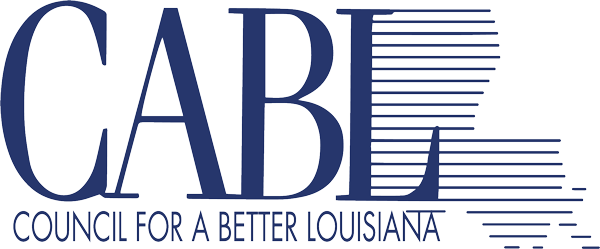
Last week CABL released The Louisiana Fact Book: Facts for the Future. It consists of a series of 35 indicators that provide a snapshot of where Louisiana stands on a broad set of issues. That raises the question: What should we do with them?
The first is, we should stop and take a look at them. The fact that 18 are moving in the right direction compared to 17 that are regressing or unchanged tells us one thing. We are on a very mixed trajectory.
Where are we making progress? One example is actually infrastructure. The miles of roads in our state that are in “acceptable” condition by international standards has generally increased in recent years, and we have seen a fairly significant decline in the number of structurally deficient bridges. Access to high-speed Internet, which is also an infrastructure issue, is improving, too.
Education has some encouraging indicators, as well. Third grade reading, growth towards “Mastery” in grades 3-8, high school students earning college credit, and overall education attainment are all moving in the right direction. COVID set us back, but we are close to returning to pre-pandemic levels in most cases.
And yet, there are some indicators that must raise some red flags. Life expectancy in Louisiana is getting shorter. We have more low birthweight babies being born, more adult obesity, more premature deaths due to heart disease, and food insecurity, while not getting worse, is still the third highest in the nation.
And people are leaving. Our population is shrinking compared to virtually every other southern state. Much of that is from outmigration, where 80,000 more people moved out of Louisiana than moved in between 2020-2022. That’s another trend that bucks the south. We also have the second highest poverty and child poverty rates in the country, and it is getting worse not better.
These statistics have to give us pause. They must also be a part of this year’s election discussion. Certainly, we can’t fix everything overnight, but we should be able to hear from candidates about which of these areas are priorities and what they intend to do about it.
For instance, kindergarten readiness, an important barometer of future success, has been trending downward. Shouldn’t we find out where candidates stand on expanding access to quality early education and care?
People are leaving Louisiana because of better jobs in other states. We should hear how candidates plan to create more jobs in Louisiana. We don’t mean just more of the same, but the types of jobs that attract highly-educated workers who can contribute to our economy.
We have published our recommendations for addressing these and other issues through our RESET Louisiana initiative with the Public Affairs Research Council and the Committee of 100. Other groups have released similar platforms. But ask yourself, what are the candidates saying?
These are not esoteric things. Better education in the early years means more successful adults, higher wages, less crime, lower health costs, and greater prosperity for the whole state.
Growing our population means more jobs, higher paying jobs, and a stronger economy.
Healthier citizens means a stronger workforce, less consumption of public assistance, and longer lives.
All of these are real and tangible outcomes.
In commenting on the CABL indicators The Advocate said it well: “Let’s ask candidates for more than aspirational talking points. We need to know what they propose to do on education and on all the other things that hold Louisiana back.”
That’s the only way we can send the message that beyond all the rhetoric, what we want for Louisiana is progress we can feel, progress we can measure, and progress that makes a difference in the wellbeing of our state.
